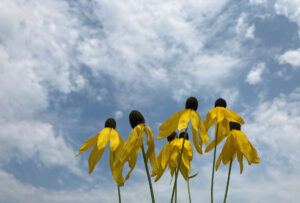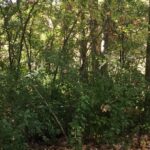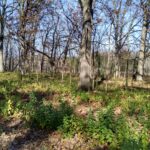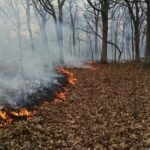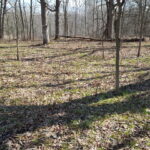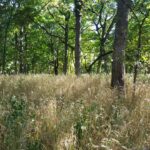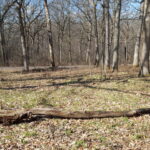From MNL\’s Vegetation Management team:
Buckthorn invasions can vary from small and sparse to large and overwhelming. The first step in a buckthorn battle is devising a plan of attack. We want to know the goal of the restoration area first. Are we trying to achieve an oak savannah, a diverse woodland, or a ballfield for the community baseball team? Knowing where we are going with help use create a plan on how to get there. After knowing the goal, specific site conditions, customer requests, etc., we can move onto initial removal. This involves dealing with the existing population of buckthorn which can be done in a few different ways:
- Cut & treat – With this method buckthorn is typically cut with brush saws and/or chainsaws. The cut stumps are treated with an herbicide to prevent its regrowth (buckthorn can return with vengeance if this step is skipped). The cut and treat method can be exceptionally useful in low density areas, sensitive areas or locations where equipment cannot be accessed (small, steep, rocky terrain).
- Forestry mowing – This method utilizes some mid-sized equipment and is excellent for larger areas with mature and dense buckthorn. A skidloader with a mulching attachment is used to shred the entire standing buckthorn shrub into mulch. It’s a fast and effective way to eliminate the buckthorn on site.
- Basal treatment – This method kills the buckthorn but leaves it standing. A ring of herbicide is applied around the base of the tree which results in the death of the plant without the need for cutting or removal. This is an excellent method for remote locations, sparse buckthorn, or very large sites with limited budgets.
While initial removal is the most dramatic and impactful, the more important step is continued management of any re-growth or new germination of buckthorn seedlings. Buckthorn seeds can remain in the seedbank and viable for over 15 years. Continued follow-up is a crucial step in a buckthorn management plan. Continued cutting, mowing, herbicide applications, prescribed burning, etc. are all tools that can be used for long term control.
The restoration area may be seeded or planted with an appropriate seed mix or plants following buckthorn removal. MNL offers custom seed mixes designed to revegetate woodland areas following the removal of established buckthorn colonies. It’s comprised of native grasses and sedges to provide fuel for prescribed burning. In addition, the plants are tolerant of the common herbicides used for buckthorn control.
After buckthorn seedling and saplings are managed, additional seeding, plugs, and/or shrubs can increase diversity and allow the restoration area to compete against future buckthorn competition.

